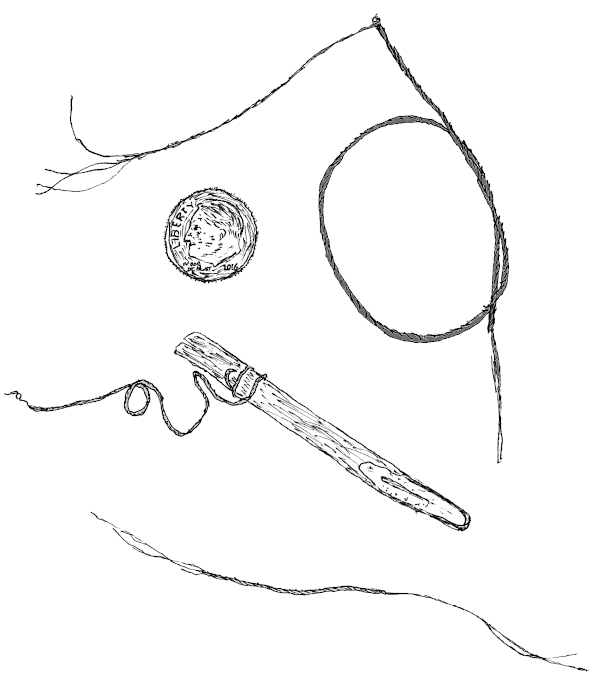
Figure 1: Showing Off - Tiny Ropes.
| Home | History | Ropemaking |
In Colonial times, it was not uncommon to make ropes thicker than six inches.[293] In parts of Asia, rice straw ropes several feet in diameter are made for temples and community tug-of-wars. It is impossible for me to show off by making a big rope. I don't have the need, the power, nor the inclination to make anything bigger than one inch diameter.
So I amuse myself making ropes as small as I can. This is one time it helps to be near-sighted.

Figure 1: Showing Off - Tiny Ropes.
These are structurally sound ropes, but they are so small, I wouldn't want to use them for anything important. They won't set any records for their size, being comparable to many plied yarns from around the world. Even the purported Neanderthal rope from Abri du Maras was in this range.
| Colophon | Contacts |